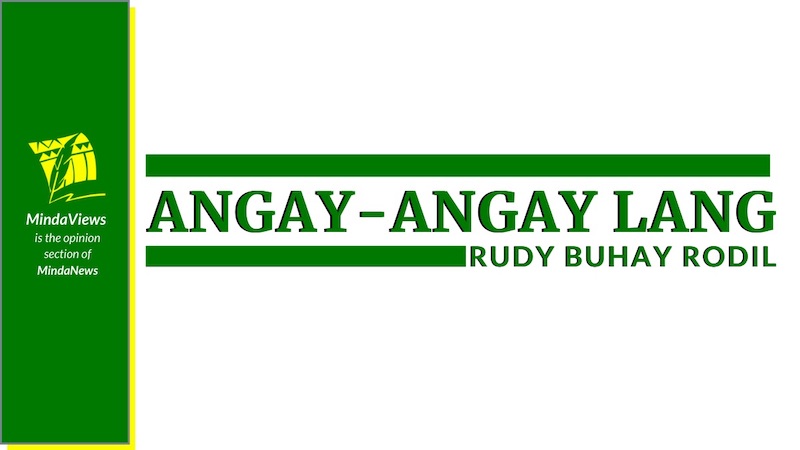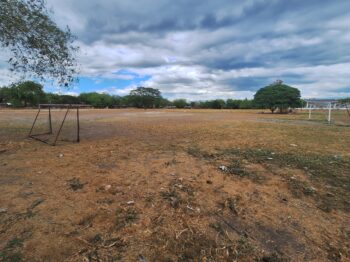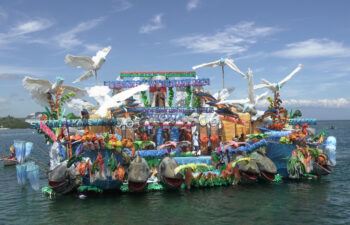
Part 4 of 7: A Quick Historical Overview of the Resettlement Process in Mindanaw
(Editor’s note: This article is a slight revision of the lectures the author delivered between the years 1999 and 2000 to two major audiences — the Center for Media Freedom and Responsibility in Metro Manila and the Bishops-Ulama Forum, now known as Bishops-Ulama Conference, in Davao City.)
The resettlement of Mindanaw was initiated by the American colonial government as early as l9l3. It was sustained and intensified during the Commonwealth period, and picked up momentum in the post-World War II years. Altogether, there were a number of resettlement programs.
A severe drought in Sulu and Zamboanga and grasshopper infestation in Davao in 1911-1912 adversely affected rice supply in the Moro Province and this gave General John Pershing, who was then Governor of the Moro Province, the excuse to call “for the importation of homesteaders from the overpopulated Philippine areas.” The campaign for settlers into the first agricultural colony in the Cotabato Valley started in earnest in Cebu where fondness for corn among the population is legend. The American colonial government paraded around Cebu a cornstalk, thirteen feet tall, propped up with a bamboo stick, to convince the people of the fertility and productivity of the soil in Cotabato. But in addition to being farmers, the volunteers had also to be skilled in arnis, an indigenous form of martial arts. Fifty persons responded. The government provided the initial capital and some farm tools on loan basis. They were also assured of eventually owning homesteads. Thus was born the first agricultural colony at the Cotabato Valley. Its specific aim was to produce cereals or rice and corn.
The year 1913 saw the passage by the Philippine Commission of Act No. 2254 creating agricultural colonies aimed, officially, at enhancing the rice production effort already started in the Cotabato Valley. Specific sites selected were Pikit, Silik, Ginatilan, Peidu Pulangi and Pagalungan, the very heart of Magindanaw dominion in the upper Cotabato Valley – the site of several armed skirmishes last year between the MILF and the armed forces, and Glan at the southernmost coast of the present South Cotabato province. In its supposed attempt to integrate the various sectors of the population, distinct population groups were purposely mixed in the colonial sites. In Colony No. 2, for example, composed of Manaulana, Pamalian, Silik, Tapodok and Langayen, Cebuano settlers and Maguindanaw natives lived together. Strangely, the settlers were allotted 16 hectares each while the Maguindanawon were given only eight hectares each. Altogether, six agricultural colonies were established in 1913.
Unable to further finance the opening of more colonies, the Manila government passed Act 2206 in 1919, which authorized Provincial Boards to manage colonies themselves at their expense. Lamitan in Basilan was thus opened by the Zamboanga province, Tawi-Tawi by Sulu, Marilog by Bukidnon, and Salunayan and Maganoy by Cotabato between 1919 and 1926.
No significant government resettlements were organized until 1935. Settlers nevertheless migrated either on their own or through the Inter-island Migration Division of the Bureau of Labor. As a result, aside from already existing settlement areas like that in the Cotabato Valley, or in Lamitan in Basilan and Labangan in Zamboanga, and Momungan in Lanaw, we also see several in Davao, specifically in the towns of Kapalong, Guiangga, Tagum, Lupon and Baganga; also, in Cabadbaran, Butuan and Buenavista in Agusan, and Kapatagan Valley in Lanaw.
The next big initiative was the Quirino-Recto Colonization Act or Act No. 4197 of 12 February 1935 which aimed at sending settlers into any part of the country but with special reference to Mindanaw, that is, as a solution to the Mindanaw problem, as the peace and order problem with the Moros was called. But before any implementation could be attempted, the Commonwealth government came into existence and it decided to concentrate on opening inter-provincial roads instead.
The National Land Settlement Administration (NLSA) created by Commonwealth Act No. 441 in 1939 introduced new dimensions into resettlement. Aside from the usual objectives, there was one curious item providing military trainees an opportunity to own farms upon completion of their military training. The Japanese menace was strongly felt in the Philippines at this time and this particular offer was an attempt by the government to strengthen national security. Under the NLSA, three major resettlement areas were opened in the country: Mallig Plains in Isabela, and two in Cotabato, namely, Koronadal Valley made up of Lagao, Tupi, Marbel and Polomolok and Ala (now spelled Allah) Valley consisting of Banga, Norallah and Surallah. By the time the NLSA was abolished in 1950, a total of 8,300 families had been resettled.
The Rice and Corn Production Administration (RCPA) of 1949 was meant to increase rice and corn production but was also involved in resettlement. It was responsible for opening Buluan in Cotabato, and Maramag and Wao at the Bukidnon-Lanaw border.
Before the National Resettlement and Rehabilitation Administration (NARRA) came into existence in 1954, the short-lived Land Settlement Development Administration or LASEDECO took over from NLSA and RCPA. It was able to open Tacurong, Isulan, Bagumbayan, part of Buluan, Sultan sa Barongis and Ampatuan, all in Cotabato.
NARRA administered a total of 23 resettlement areas: nine were in Mindanaw; one in Palawan; five in the Visayas; one in Mindoro; seven in mainland Luzon.
A product of the Land Reform Code, Land Authority took over from NARRA in 1963. For the first time, resettlement became a part of the land reform program. The creation of the Department of Agrarian Reform in 1971 also brought about the existence of the Bureau of Resettlement whose function was to implement the program of resettlement.
The Economic Development Corps (EDCOR), a special program of the government to counter the upsurge of the Huk rebellion — a brainchild of Ramon Magsaysay, then Secretary of National Defense under President Elpidio Quirino — must also be mentioned. This program was responsible for opening resettlement areas for surrendered or captured Huks (insurgents) in such areas as Isabela and Quezon in Luzon, and Lanao del Norte, North Cotabato and Maguindanaw in Mindanaw. Those in the latter were carved out in the heart of Magindanaw and Meranaw ancestral territories. One of them, the town of Buldon in Maguindanaw is a battleground between the forces of the Moro Islamic Liberation Front (MILF) and the government armed forces.
The formal resettlement programs spawned the spontaneous influx of migrants who came on their own. It is estimated that more people came this way than through organized channels.
To be able to appreciate how fast was the process of displacement among the indigenous groups, one can do a comparative study of the population balance in Mindanaw over several census years.
(MindaViews is the opinion section of MindaNews. A peace specialist, Rudy Buhay Rodil is an active Mindanao historian and peace advocate.)
Next: Part V: Population Shifts in Cotabato







